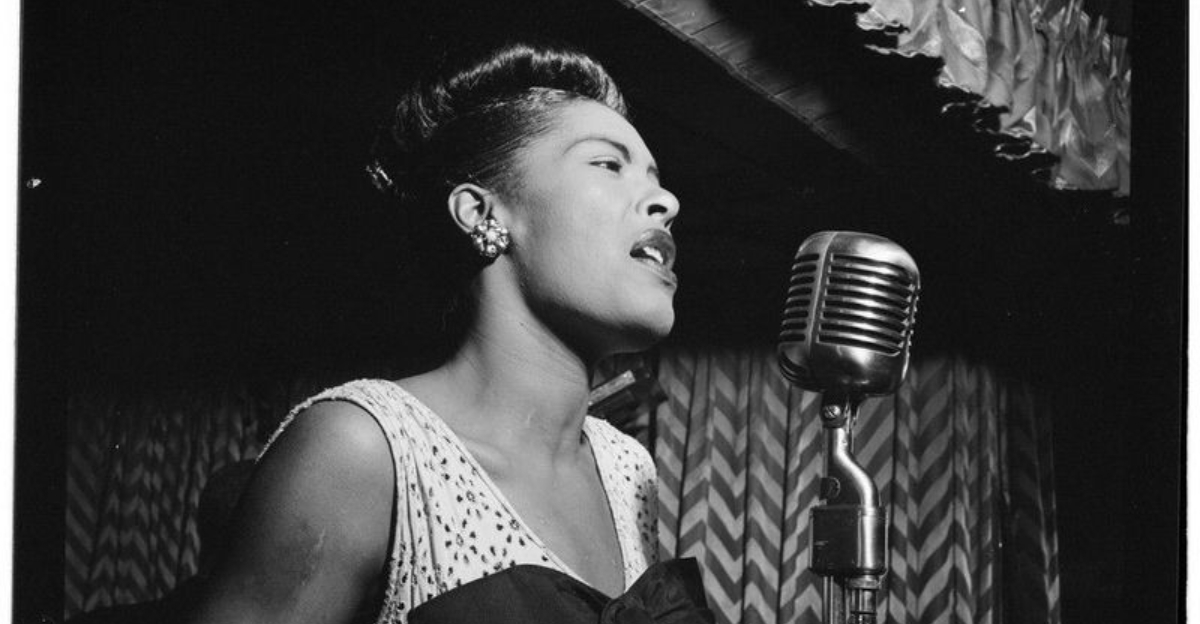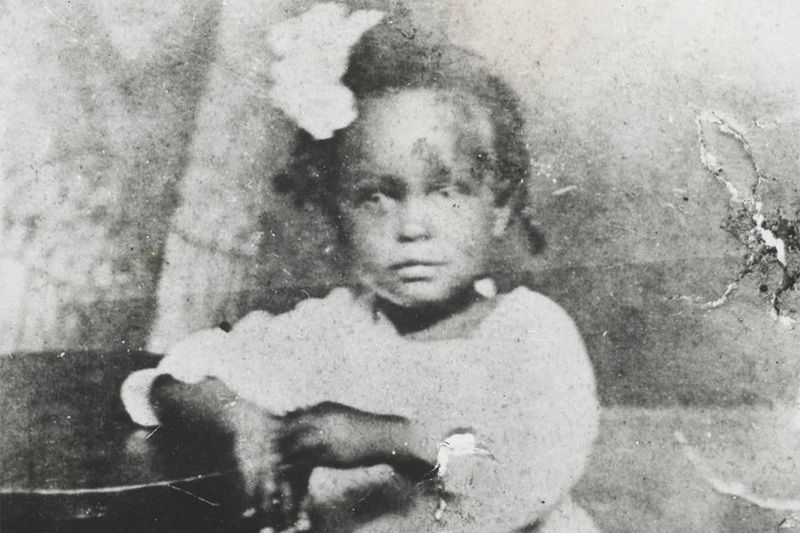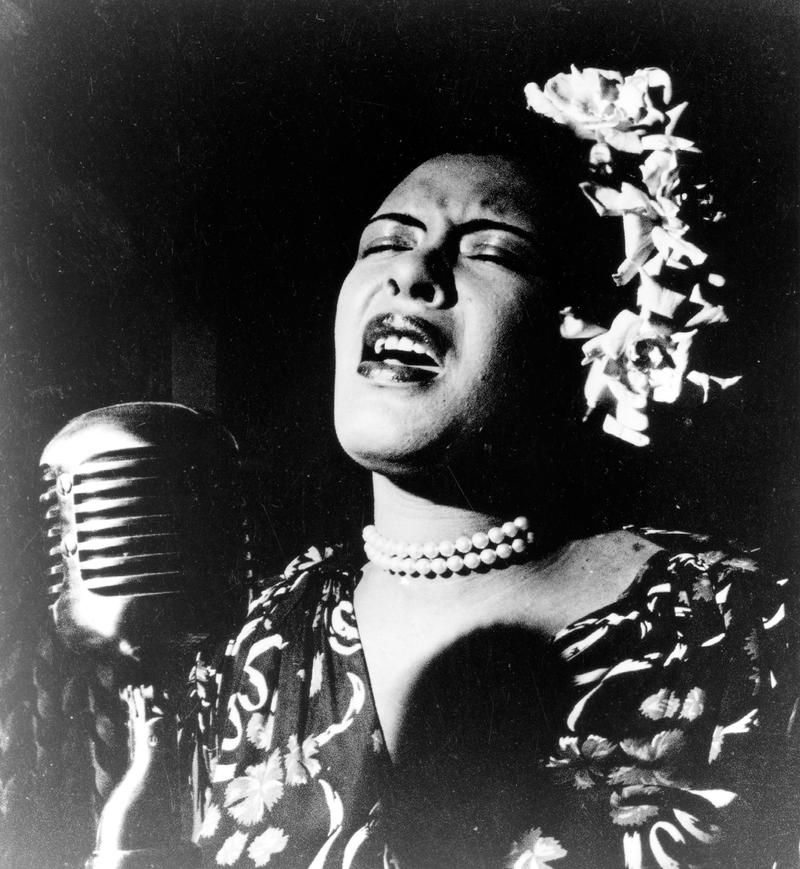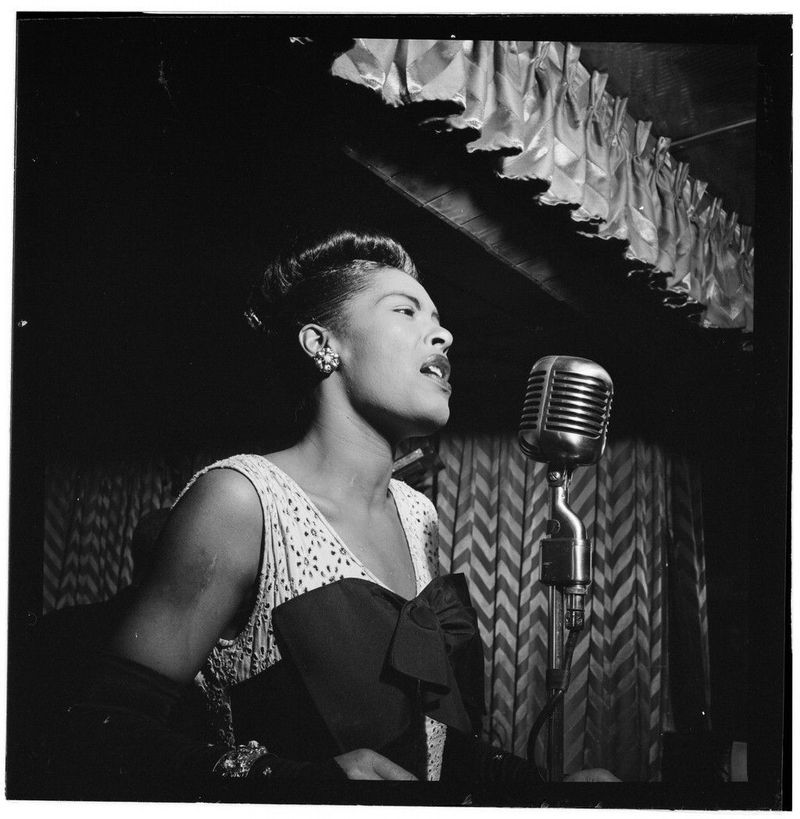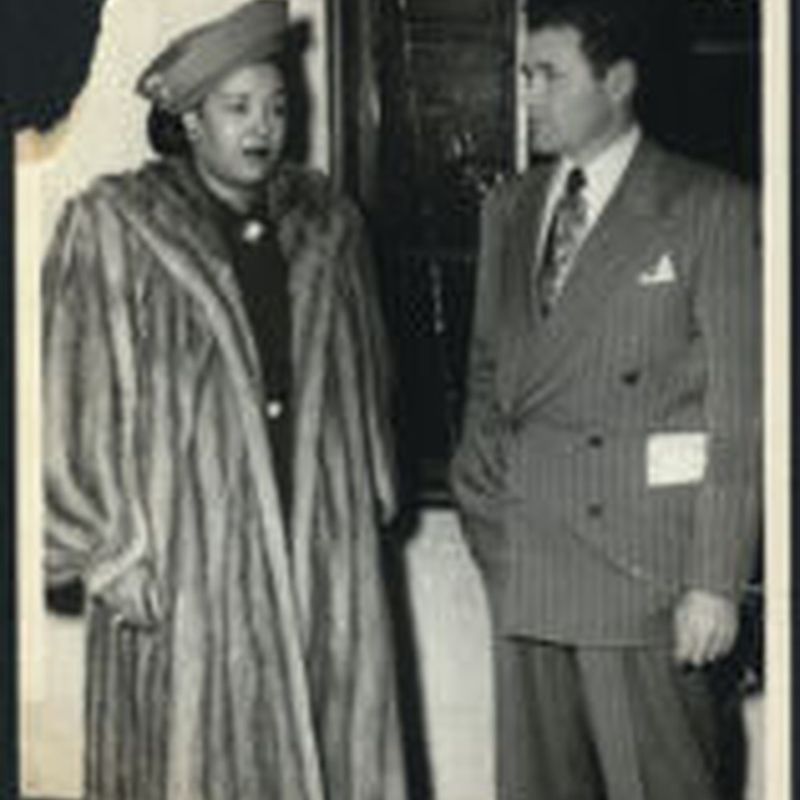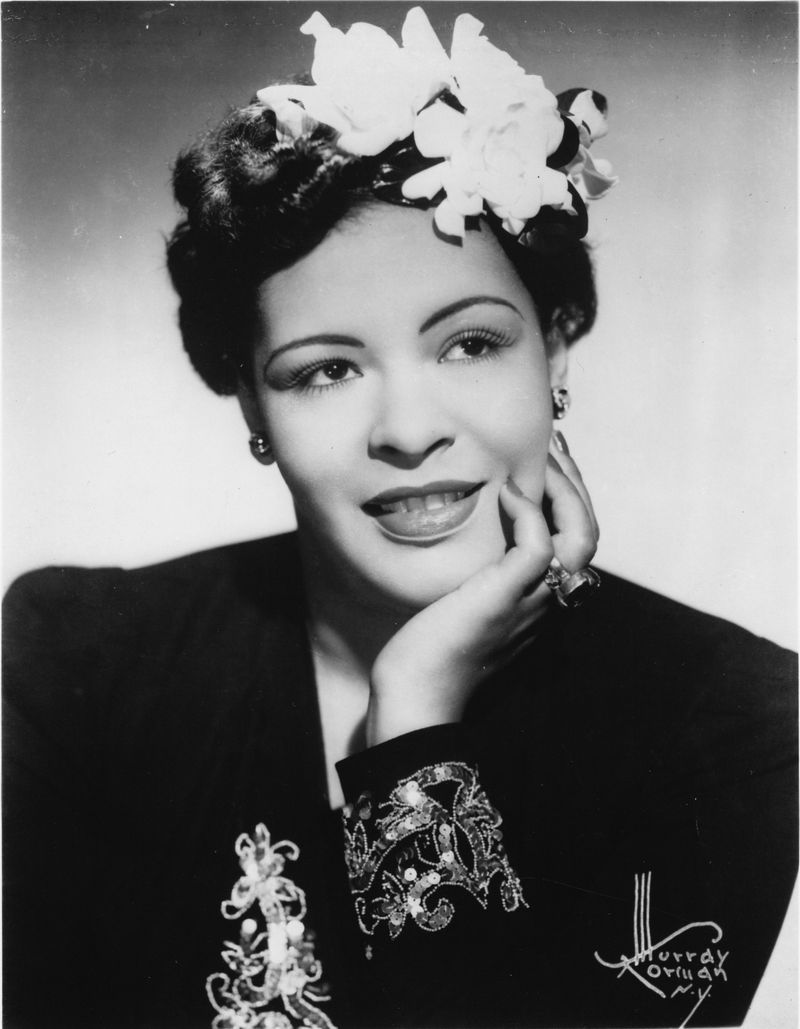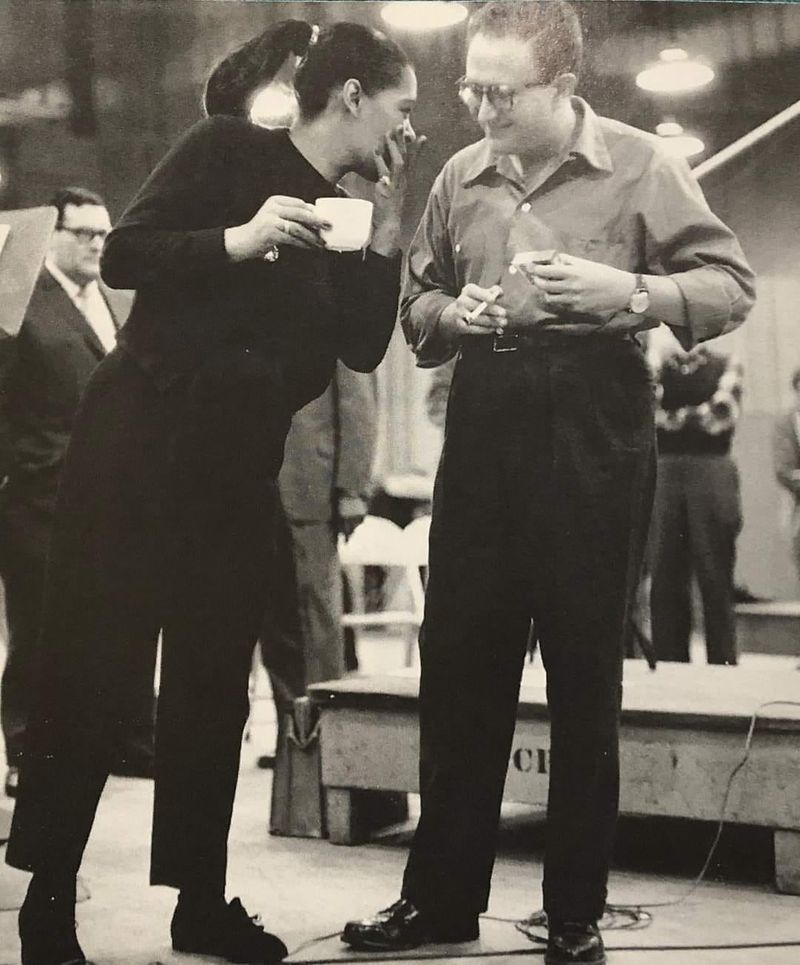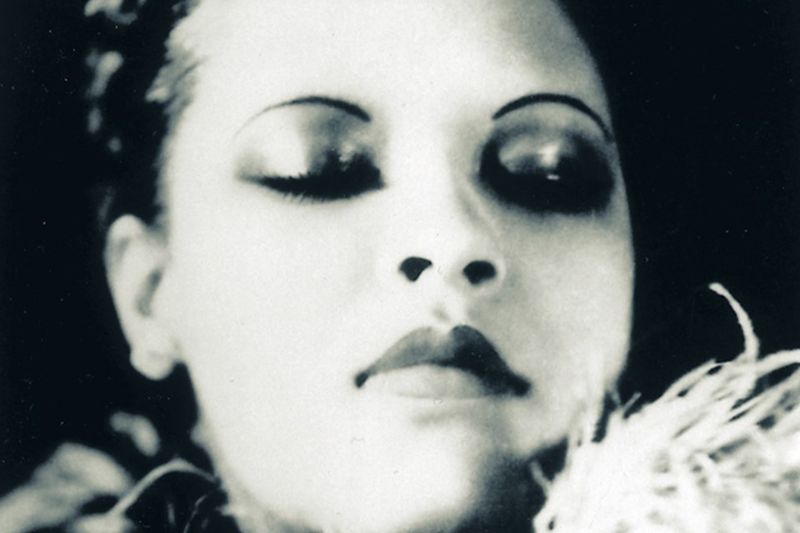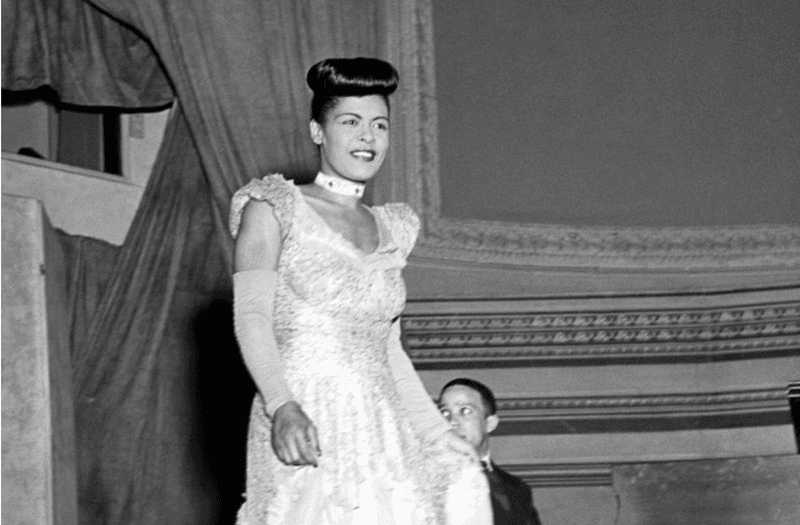Billie Holiday’s life was a tapestry woven with both triumphs and tribulations, each thread a testament to her enduring influence on music and society. Known as “Lady Day,” she transformed the era’s musical landscape with her unique voice and poignant storytelling.
Through a series of captivating images, we explore the life of this jazz legend, her struggles, her art, and her timeless legacy. From her challenging beginnings to her rise as a symbol of resistance and creativity, Billie Holiday’s narrative is as complex and resonant as the songs she sang.
1. A Childhood of Hardship
Billie Holiday, born Eleanora Fagan in 1915, faced a childhood defined by poverty and instability. Growing up in Baltimore, her environment was a patchwork of challenges, with inconsistent parental presence.
Despite these odds, Billie found solace in music, often singing along to records by Louis Armstrong and Bessie Smith. Her voice, even then, hinted at the raw emotion she would later master.
The streets of Baltimore, though harsh, were the backdrop to a young girl whose spirit refused to be confined by circumstance. Music was not just an escape; it was her salvation and path to a future she could only dream of.
2. Harlem’s Rising Star
In the heart of Harlem during the 1930s, Billie Holiday’s voice was like no other. As a teenager, she graced the stages of nightclubs, ensnaring audiences with her soulful melodies and emotional depth.
Her performances in these vibrant venues caught the attention of producer John Hammond, who recognized her unparalleled talent. This discovery was the catalyst that launched her career, shaping the future of jazz.
New York City’s Harlem wasn’t just a neighborhood; it was the epicenter of a cultural renaissance, and Billie was its rising star, leaving an indelible mark on the music scene.
3. The Power of “Strange Fruit”
In 1939, Billie Holiday recorded “Strange Fruit,” a haunting protest against the lynching and systemic racism prevalent in America. The song’s stark imagery and raw emotion stirred audiences, making it an anthem of resistance.
Despite its powerful message, performing “Strange Fruit” often put Billie at odds with authorities, yet she continued, driven by a deep sense of justice. Her rendition was more than just music; it was a catalyzing force in raising awareness and inspiring change.
Through this song, Billie Holiday became more than a singer; she became a voice for those silenced by oppression.
4. Trials and Tribulations
Billie Holiday’s fame did not shield her from life’s darker shadows. Her struggles with addiction were public and harshly scrutinized, leading to multiple arrests. In the 1940s, she was often in the legal spotlight, stripped of her cabaret license, a devastating blow that limited her ability to perform.
This tumultuous period was further complicated by abusive relationships and relentless harassment from authorities, particularly the FBI. Yet, amid these trials, Billie retained her dignity, channeling her pain into her art.
Her resilience in the face of systemic adversities is as much a part of her legacy as her music.
5. Lady Day’s Style and Voice
Billie Holiday was more than a singer; she was an icon of style and emotion. Known for her intimate phrasing, she poured her soul into every note, making each song uniquely hers. Her signature look—a fresh white gardenia in her hair—became synonymous with her persona.
This unique style was a reflection of her individuality and artistic spirit. Even as she battled personal demons, her performances remained a testament to her unwavering passion.
Billie’s voice, with its rich timbre and heartfelt delivery, transcended the ordinary, solidifying her place as one of jazz’s most authentic voices.
6. A Voice That Defied Limits
Despite ailing health and a voice showing signs of wear, Billie Holiday’s spirit shone brilliantly. Her 1958 album “Lady in Satin” encapsulated the raw vulnerability and emotional depth she was known for.
Each track was a poignant reminder of her life’s struggles and triumphs, delivered with haunting sincerity. The recordings reveal a woman who, despite the years of hardship, sang with a passion that defied her physical decline.
This album, recorded just a year before her untimely death, remains a powerful testament to her enduring artistry and the unbreakable essence of her spirit.
7. The Final Curtain
Billie Holiday’s life, filled with both brilliance and heartbreak, came to a tragic end in 1959. She passed away at the age of 44, under the shadow of legal troubles and in police custody.
Her funeral, attended by a multitude who cherished her, was a poignant farewell to a woman whose voice had touched millions. Despite her struggles, Billie’s legacy was sealed not just in her music but in the hearts of those she left behind.
Her passing marked the end of an era, yet her influence on jazz and popular music continues to resonate.
8. Enduring Legacy
Billie Holiday’s legacy is a vibrant melody that echoes through time. Her influence extends beyond her era, inspiring countless artists across genres like jazz, soul, and pop.
Tributes and covers of her work are a testament to her timeless appeal and the emotional depth she brought to music. From Grammy awards to cinematic portrayals, her life and art continue to captivate and inspire.
Billie Holiday’s narrative of resilience and artistry serves as a beacon for those who seek to transform personal trials into creative triumph. Her story is a reminder of the power of music to transcend boundaries.
9. The Lady Sings: Autobiography
In 1956, Billie Holiday co-authored her autobiography, “Lady Sings the Blues,” offering an unfiltered glimpse into her tumultuous life. This candid narrative revealed the personal battles she faced and the triumphs she achieved.
Her storytelling was as evocative as her music, painting a vivid picture of her journey through both fame and adversity. This book stands as a testament to her honesty and resilience, inviting readers to witness the raw, unvarnished reality behind the legend.
Billie’s memoir remains a poignant reflection of a life lived passionately and her relentless pursuit of artistic truth.
10. Cinematic Portrayals
Billie Holiday’s life and music have been immortalized in film, capturing the essence of her complex persona. Biopics, like the critically acclaimed “Lady Sings the Blues,” starring Diana Ross, have brought her story to the silver screen, introducing her to new generations.
These portrayals highlight her struggles and triumphs, weaving her legacy into the cultural fabric. Through cinematic storytelling, audiences experience the depth of Billie’s influence and the indelible mark she left on music and society.
Her story, retold through film, continues to resonate, reaffirming her status as a timeless icon.
